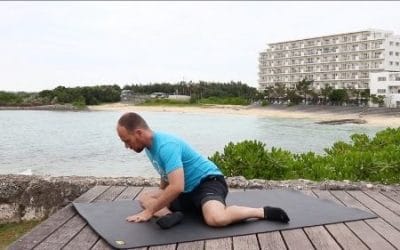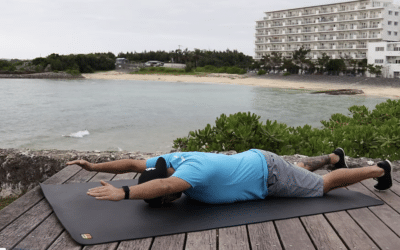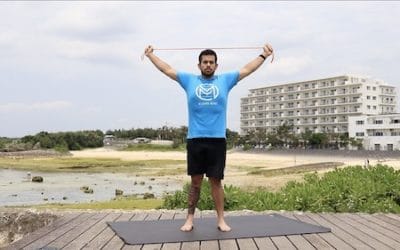Foam Roll Quads
Foam Roll Quads
Equipment Needed to foam roll your quads:
- Open floor, or yoga mat
- Foam Roller
quad foam rolling Instructions:
- Lie face down on the floor and place one thigh on a foam roller
- Using your forearms as support press off of the floor to increase pressure on the roller
- Roll up and down over the foam roller applying firm but tolerable pressure
- Make sure to cover the entire Quadricep (thigh), break it up into segments if needed
- Rotate your leg in and out, exposing the entire muscle to the foam roller
- Focus on any particularly tender areas
- Roll for the prescribed amount of time then switch sides
Common Errors:
- Ensure that you are rotating the thigh to cover the whole muscle
- Make sure to relax the muscle being massaged
Progressions / Regressions:
If this is too challenging:
- Put both thighs on the foam roller at the same time
- Use your opposite leg and arms to help support more of your weight
If you want more of a challenge:
- Lift your opposite leg off the ground to maximize pressure
Related Exercises
90/90 Hip Stretch
90/90 Hip Stretch90/90 hip Stretch The 90/90 hip stretch is a powerful exercise designed to improve hip mobility, flexibility, and overall lower body function. This stretch targets the hip internal and external rotators, and the glutes, making it ideal for athletes...
Prone Angel
Prone AngelProne Angel The prone angel is a powerful exercise designed to improve upper back strength, shoulder stability, and overall posture. Performed while lying face down, this movement mimics the motion of making snow angels. It specifically targets the scapular...
Band Pass Through
Band Pass ThroughBand pass through The band pass through, also known as the band shoulder pass through, is an effective exercise designed to improve shoulder mobility, flexibility, and stability. This exercise involves using a resistance band to perform a controlled,...



